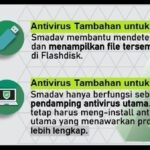As a content creator for carcodepro.com and a seasoned auto repair professional, I’ve explored various technologies to enhance vehicle diagnostics and repair processes. Among these, 3D scanning using devices like the Structure Sensor has shown considerable promise. My experience with the first-generation Structure Sensor, particularly in conjunction with iPads, has provided valuable insights into its capabilities and limitations, especially when considering its application in car scanning scenarios.
Having used the original Structure Sensor with an older 12.9” iPad Pro for several years, I’ve witnessed its effectiveness firsthand. While I now also utilize a 2020 iPad Pro, my workflow often involves still relying on the Structure Sensor with the older iPad due to not yet upgrading to the Structure Sensor Gen 2. For tasks like automotive surveys, software like MagicPlan on the new iPad demonstrates excellent performance.
Interestingly, Occipital’s Canvas software, designed for use with the Structure Sensor, has expanded its compatibility to include the LiDAR sensor found in the 2020 iPad Pro and iPhone 12 Pro. There have been instances where the battery of my original iPad (powering the Structure Sensor) has depleted during a survey, and I’ve had to resort to using the built-in LiDAR on the newer iPad to complete the job.
However, it’s crucial to note the differences in scan quality. Within the Canvas application, scans captured using the iPad Pro’s integrated LiDAR sensor exhibit a noticeably lower geometric resolution compared to those obtained with the Structure Sensor. Consequently, the processed texture and colorized scans from LiDAR are also proportionally less detailed. This seems to be, in part, a software-related constraint. For instance, using a dedicated app like ‘3D Scanner,’ I can achieve extremely dense, high-resolution meshes and texture atlases, albeit at the cost of significantly larger file sizes. A typical room scan using a Structure Sensor might result in a manageable 40MB mesh file, with an additional 20MB for a color texture atlas when colorized (a cloud-based process costing approximately $2 per scan). In contrast, a relatively fine detail scan (3mm resolution) using LiDAR natively within the 3D Scanner app can easily escalate to hundreds of megabytes. A comprehensive room scan could even exceed 1GB. While resolution can be adjusted to manage file size, I’ve observed instability in the app when scan sizes approach or exceed 1GB, sometimes necessitating scan deletion. It’s important to mention that my primary use for these scans is not for direct integration into CAD software like SketchUp. Instead, I utilize them in Meshlab for precise measurements and as visual references to validate and enrich my surveys conducted with tools like MagicPlan and Leica DISTO laser measures.
Over the years, I’ve found that directly incorporating Structure Sensor scans into SketchUp workflows offers minimal advantages and often introduces unnecessary complexity. However, their value as supplementary reference and measurement tools is undeniable. They enable the capture of comprehensive spatial data, which significantly enhances the accuracy and detail of traditional measured and photographic automotive surveys, especially in complex collision damage assessments.
A key strength of the Structure Sensor lies in its remarkable accuracy. For residential or automotive surveys, its precision is comparable to that of my DISTO laser measure. Occipital provides a scan-to-CAD service that processes uploaded scans in the cloud to generate SketchUp files, incorporating algorithms and human review. However, my early experiences with this service revealed inaccuracies stemming from approximation algorithms used in the process. Identifying and rectifying these errors often proved more time-consuming than manually constructing a model from the highly accurate source scan data, combined with traditional measurement techniques.
Further investigation into the accuracy of LiDAR scans is warranted, as my usage has primarily been limited to backup situations when the Structure Sensor was unavailable. For automotive professionals considering 3D scanning, particularly for applications like collision repair estimation and documentation, understanding the nuances of Structure Sdk Car Scan capabilities and comparing them with alternatives like LiDAR is crucial for informed decision-making.


